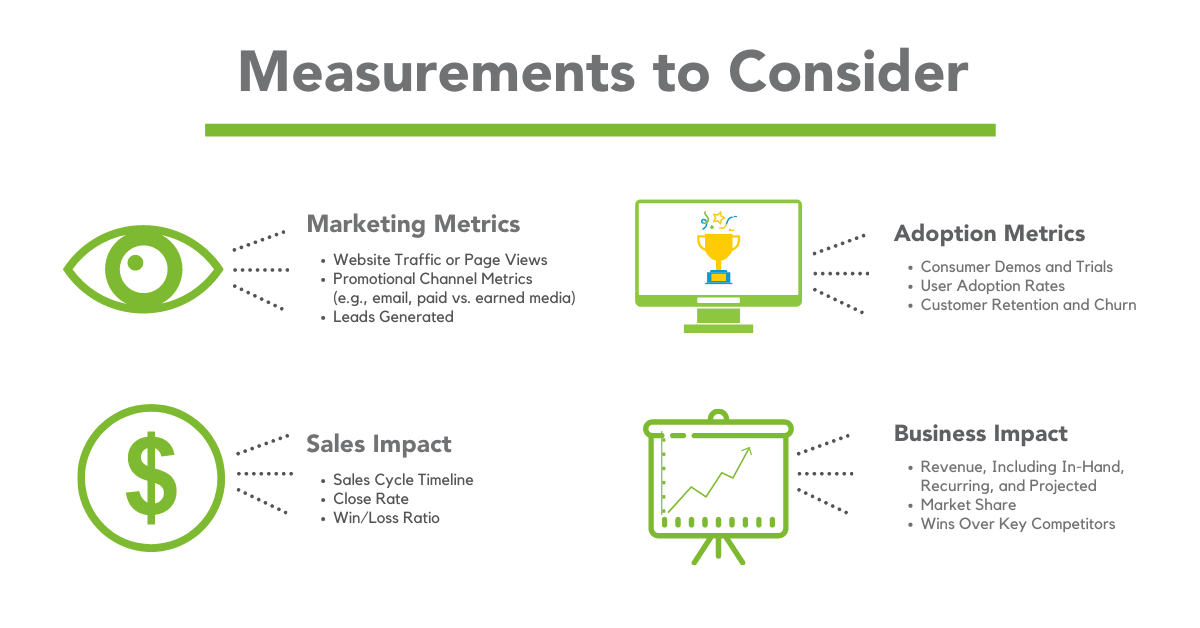The COVID-19 pandemic has not only driven an increased appetite and need for digital transformation, but also forced companies across the world to rethink how they launch products and find a new normal. No healthcare sector has been left untouched. To address the increased demand in digital innovations, healthcare technology companies must overcome a myriad of challenges to launch new and evolved offerings. All the while competition continues to heat up, with International Data Corporation (IDC) reporting that spend on digital transformation technologies and services is set to grow 10.4% in 2020 to $1.3 trillion (with healthcare industry growth at 15.7%.[1]).
If launching a new product in this economic climate wasn’t daunting enough, increasing competitive pressures may make it feel unsurmountable. Given this digital growth and the shifting priorities in healthcare, new products must rise above the fray to gain adoption and prominence in the marketplace.
What is the silver lining? If you can figure out how to define and launch a product well, the market is there – consumers are ready to take on the change. As new technology markets emerge, consumer behaviors and preferences have begun to shift to align with this disruption. In fact, the pace of technology adoption has accelerated in recent years. According to Michael DeGusta of MIT’s Technology Review, “it took 30 years for electricity and 25 years for telephones to reach 10% adoption but less than five years for tablet devices to achieve the 10% rate”[2].
This unprecedented pace of technology adoption is felt across industries, and corporations and entrepreneurs should capitalize on this momentum by taking advantage of the opportunity to launch a new product in the healthcare technology space.
Launching a new product is no simple task and can be dwarfed by a company’s focus on product development. We share below a few perspectives for successful launch planning, team coordination, and an overall strategy that can make or break a product’s success in the healthcare market.
Success factor #1: Define what a successful product launch looks like
It is common practice that companies are so intrinsically focused on designing and manufacturing new products that they develop a launch plan too late. The right time to start defining how to successfully bring the product to market begins before developing the minimum viable product (MVP). Begin by defining what a “successful” product launch will entail, and never underestimate the power of a plan. In developing the launch plan, ensure that representatives from a range of internal stakeholder teams, including Product, Sales, and Marketing provide input into how success will be measured and defined.
The process of defining leading and lagging key performance indicators (KPIs) will assist in aligning around objectives and in monitoring the success of the product launch. While metrics will differ for every company and product, here are some typical measurements to consider:

Success factor #2: Clearly define roles across product, marketing, sales, and customer success functions
As highlighted previously, in order to successfully launch a product, the internal team must be aligned from the beginning in developing the launch strategy and associated objectives. Client-facing teams must have the skillsets to consistently tell the product story, know the competition and product differentiators, and have a deep understanding of the target market and customer. In order to achieve consistent messaging, clearly define roles and responsibilities across the internal teams that will interface with users pre- and post-sale, including Product, Marketing, Sales, Implementation, and Customer Support. Each team plays an essential role in product delivery and therefore must understand the downstream impacts of their role in the process, from pre-sale to go-live.
At the cross-section of Product, Marketing, Sales, and Implementation, two critical roles, sometimes under-valued, are essential to the success of bringing in a product to market: Sales Enablement and Solutions Engineering. A Sales Enablement lead drives the sales strategy and training plan to help facilitate a coordinated sales process and is vital to prepare the team for launch. The most successful sales organizations are trained to understand the true capabilities, including strengths and weaknesses, of the product to ensure they do not over-promise and under-deliver to customers. Today, many organizations are also leveraging Solutions Engineers to assist sales reps in setting proper expectations with customers. A Solutions Engineer serves as a liaison between the Sales, Product, and Implementation teams in order to understand a potential customer’s technical business requirements prior to finalizing the sale. This pre-sale role is critical to serve the coordinated efforts across the internal teams, as well as to keep customer needs at the center of decision-making. At the core of this collaboration is the importance of user acceptance testing and understanding the target market’s needs to ensure the internal team is aligned to serve the customer upon product launch.
Success factor #3: Develop a go-to-market strategy aligned to the target market
Once product launch objectives are established, clearly define a Go-to-Market strategy and the associated target market to ensure an accurate product-to-market fit. A comprehensive Go-to-Market Strategy includes both Marketing and Sales Strategies. Particularly for healthcare technology, it is critical to research the target market, including access to technology and overall digital literacy, to create an effective marketing strategy. Once the target market is well known, it is important to define the buyer personas as part of the marketing and sales strategy and to develop the appropriate tactics to deploy. Creating buyer personas allows the Marketing and Sales Enablement teams to align strategy with target customer values, demographics, budget constraints, and goals. While defining all potential buyer personas is helpful in establishing a robust marketing strategy, the team should focus on the buyers that are hungriest to adopt the product in the initial product launch. By clearly defining the launch buyer persona, marketing strategies can be simplified, targeted, and agile. Once the product is fully launched, new strategies can be deployed and expanded to additional buyer personas.
While there are several marketing tactics to leverage for a product launch, including a launch event, webinars, and social media campaigns, it is important to ensure that the marketing strategy aligns with target customer needs. Further, thread key messaging about the product consistently throughout all deployments. In fact, today many companies are hiring third party marketing agencies or creating a specific Product Marketing Manager role to ensure marketing messaging is consistent and aligned across Product, Marketing, and Sales functions.
Success factor #4: Use test and learn to gauge launch readiness
Once key personas within the target market are identified and clearly defined, it is paramount to tap into these networks to leverage customer feedback throughout the product launch lifecycle. By establishing the target market early in the launch planning process, teams can collect feedback and recognize essential product or messaging changes prior to a widespread launch, while also building an early customer distribution list. Customer interviews, usability testing, social listening via social media platforms and pre-launch product pilots are recommended methods to incorporate user feedback prior to launch. The practice of pre-launch user acceptability testing enables the team to make product adjustments prior to deploying the go-to-market strategy and marketing tactics.
Keep in mind, the product is never finished, and therefore user feedback does not end at product launch. It is important to incorporate customer feedback cycles into the marketing and product development culture by establishing clear processes (automating when possible), especially as customer preferences are elastic and change overtime. A truly successful product launch strategy includes a forum for post-launch feedback to drive product prioritization decisions on an ongoing basis.
Success factor #5: Enable frictionless adoption of your technology
First impressions are defining in nature. A user’s first-time experience with a product can make or break the adoption and retention trajectories. In fact, “the average app loses 77% of its daily active users within the first 3 days after the install”[3]. Therefore, it is imperative that the first-time user experience and associated onboarding plan are clearly defined as part of the product launch strategy. To create a successful first-time user experience, the strategy must be grounded in a basic but essential principle: make it easy. In a society conditioned on instant gratification, customers want to use products that solve their problems quickly and easily. A first-time user experience and the associated onboarding strategy should reduce barriers to entry and remove obstacles to using the product, making the entire experience frictionless.
In centering on the simple notion of “make it easy,” the first-time user experience can have exponential returns. To make it easy, the team again must understand the target market, their needs and why they are using the product in the first place. Once the target market has been defined, the onboarding strategy should include the key actions a user must perform to see immediate value. Make these actions easy, simple and intuitive in the first-time user experience. As new customers are acquired and the user values are more deeply understood, the onboarding strategy should be iterated on to meet the customer needs.
To further enhance the first-time user experience and onboarding strategy, a library of supporting documentation (i.e., FAQs, user guides, etc.) should be developed and available for customers to leverage as they become familiar with the product. In addition to a resource center, ensure that customers can easily access training materials such as product demos or webinars.
So how do you know if you have a successful onboarding strategy? Today, many technology companies are leveraging a new metric to quantify their onboarding strategy and predict their product adoption called, the Customer Effort Score (CES). The CES metric asks a simple question: “How much effort did you personally have to put forth to handle your request?” and is scored on a “scale from 1 (very low effort) to 5 (very high effort)”. When evaluated against traditional customer satisfaction metrics, such as Net Promoter Score (NPS) and Customer Satisfaction (CSAT), the CES metric outperformed. The study conducted by the Harvard Business Review found that “of the customers who reported low effort, 94% expressed an intention to repurchase, and 88% said they would increase their spending. Only 1% said they would speak negatively about the company”[4].
Conclusion
Companies must balance product development and product launch disciplines to ensure their product solves core customer problems, ultimately driving adoption. Even the best products can get lost among the competition, and in the COVID-19 shuffle, launching without a proper launch plan can reduce probability of success. Anchoring on these five success factors enable companies to rise above the competition, putting their innovative technologies in the hands of their customers.

Hello world!
References.
1Smith, Eileen; Shirer, Michael. “New IDC Spending Guide Shows Continued Growth for Digital Transformation in 2020, Despite the Challenges Presented by the COVID-19 Pandemic”. IDC Corporate USA. 20 May 2020. 11 June 2020.
2DeGusta, Michael. “Are Smart Phones Spreading Faster than Any Technology in Human History?”. MIT Technology Review. 9 May 2012. 11 June 2020. https://www.technologyreview.com/2012/05/09/186160/are-smart-phones-spreading-faster-than-any-technology-in-human-history/
3Chen, Andrew. ” New data shows losing 80% of mobile users is normal, and why the best apps do better”. Andrew Chen Co. 2015. 11 June 2020. https://andrewchen.co/new-data-shows-why-losing-80-of-your-mobile-users-is-normal-and-that-the-best-apps-do-much-better/
4Dixon, Matthew; Freeman, Karen; Toman, Nicholas. “Stop Trying to Delight Your Customers”. Harvard Business Review. July 2020. 11 June 2020. https://hbr.org/2010/07/stop-trying-to-delight-your-customers
About Vynamic
Vynamic, an Inizio Advisory company, is a leading management consulting partner to global health organizations across Life Sciences, Health Services, and Health Technology. Founded and headquartered in Philadelphia, Vynamic has offices in Boston, Durham NC, New York, and London. Our purpose is simple: We believe there is a better way. We are passionate about shaping the future of health, and for more than 20 years we’ve helped clients transform by connecting strategy to action.
Through a structured, yet flexible delivery model, our accomplished leaders work as an extension of client teams, enabling growth, performance, and culture. Vynamic has been recognized by organizations like Great Place to Work and Business Culture Awards for being leaders and innovators in consulting, company culture, and health. Visit Vynamic.com to discover how we can help transform your
organization or your career.
Want to learn more? Get in touch!
Other insights.
Jump to a slide with the slide dots.
Scenario Planning Infographic
Boost launch readiness with scenario planning. Learn 5 steps to stay proactive in today’s unpredictable market. Download the infographic.
Read more Brian Stamm
Brian Stamm
AI-Powered Decision Making to Simplify Your Launch Journey: Vynamic Experts on LaunchNav
LaunchNav by Inizio simplifies pharma launches with AI-driven insights, real-time benchmarks, and 800+ launch learnings.
Read moreThe One Big Beautiful Bill Act: Implications for the U.S. Health Industry
OBBBA reshapes U.S. healthcare with $1.2T cuts, shifting risk to providers, payers, and pharma. Explore impacts and strategies.
Read more